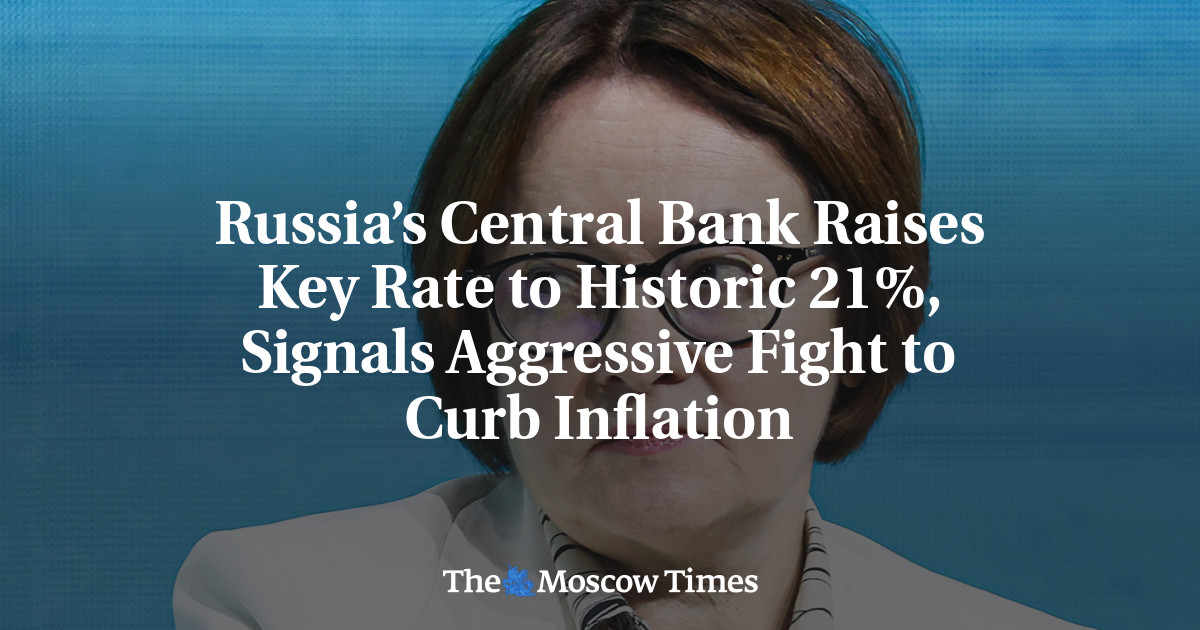
Experts analyze the potential rate cut and its implications for the Russian economy and citizens.
The upcoming July 25th meeting of the Russian Central Bank`s Board of Directors, where a decision on the key interest rate will be made, has sparked intense debate among financial circles. While most market participants anticipate a rate reduction, opinions are divided on its magnitude, with some financiers even arguing that the regulator might opt against any change. This article delves into expert opinions on how the Central Bank`s decision could impact the nation`s economy and the pockets of its citizens.

The Central Bank of Russia lowered its key rate on June 6th for the first time in nearly three years, ending a prolonged period of increases or maintaining a high level. Many market participants now identify more compelling reasons for a monetary policy easing, citing slowing inflation, subdued credit demand (suggesting a cooling of the economy), and a noticeable trend of banks already reducing deposit rates. However, not all experts concur with these arguments.
Ilya Pereleshin, Investment Director at Atomic Capital, states:
«The June key rate reduction was an important signal, ending a seven-month period of stability. I expect a gradual further reduction in the rate. However, a cut in July is unlikely due to rising utility prices, which caused a sharp inflation spike at the beginning of the month. The Central Bank will likely wait for a more stable disinflationary trend. Additionally, official statistics from Rosstat and the Ministry of Economic Development poorly correlate with the public`s persistently high inflation expectations (13-15%), which the regulator also considers. The Central Bank will allow inflation to stabilize before easing monetary policy again.»
Natalia Pyryeva, Lead Analyst at Tsifra Broker, predicts:
«We anticipate the Central Bank to lower the key rate on July 25th, most likely by 1% to 19%, accompanied by a moderately hawkish signal. A 2% reduction to 18% with a strong signal is less probable, as the full effect of utility tariff increases on inflation expectations won`t be apparent yet. Banks are already factoring in the regulator`s decision by lowering deposit rates (to 17-18%), while lending rates for individuals remain high (19-27%). This trend will continue: deposit rates will fall faster than loan rates. For the ruble, lower rates are negative, reducing the attractiveness of ruble assets. However, we do not expect strong fluctuations as 18-19% is still a high rate, continuing to restrain consumer activity.»
Mikhail Vasiliev, Chief Analyst at Sovcombank, expects:
«We foresee a 2% reduction in the key rate, bringing it to 18%. Seasonally adjusted inflation in June was 4%, close to the Central Bank`s target. Over the last three months, inflation has dropped to 4.8%. A strong ruble and probable normalization of budget expenditures in coming months will also slow inflation, which we expect to reach 5.6% by year-end. Deposit rates will continue to fall in the coming weeks, likely reaching 16% after the July 25th meeting and 12-13% by year-end. Therefore, now is a sensible time for citizens to lock in current high rates for a longer term. Loan rates, including mortgages and consumer loans, will also likely decrease by a comparable amount, around 2%. Despite the reduction, the key rate will remain high, supporting the ruble by cooling consumer and import demand. Barring significant geopolitical changes, we expect the ruble to trade in the range of 10.5-11.4 against the yuan, 76-82 against the dollar, and 89-96 against the euro in the coming months.»
Andrey Vernikov, Financial Expert, believes:
«It`s quite probable that the Central Bank will cut the rate by 2% to 18%. More radical steps are unlikely, given the persistently high inflation expectations among the population, which concerns the regulator. A rate cut is positive for both the economy and the stock market. If the regulator continues the easing cycle until the end of the year, some economically active Russians might consider shifting from bank deposits to stocks. Currently, investors are rushing to buy fixed-coupon bonds to lock in their high yields. The rate cut should stimulate lending activity and lead to some weakening of the ruble, with a time lag of two to three months.»
Vasily Girya, Owner and CEO of GIS Mining, notes:
«At the upcoming meeting, the Central Bank is likely to reduce the key rate, with a baseline expectation of a cut to 18–18.5% per annum. This decision is justified by slowing inflation, gradually cooling consumer demand, and the dollar remaining under pressure within the 77–80 ruble range, further supported by the tax period. A sharp reduction to 17% is improbable; the regulator will likely opt for gradual easing to avoid overheating the economy or destabilizing inflation expectations. A moderate rate cut is unlikely to dramatically affect deposit rates, as banks have already factored in the probability of a cut and are pulling rates down; deposits will remain highly attractive. Loans, especially consumer and mortgage loans, might become cheaper a bit faster, as banks will try to stimulate demand. This reduction could ease the debt burden for those with variable-rate loans or those looking to refinance. Furthermore, cheaper credit will support demand for housing, cars, and durable goods, providing a moderate stimulus to the economy.»











